
Pandas get dummies (OneHot Encoding) Explained • datagy
Download this code from https://codegive.com Title: One-Hot Encoding in Python using Pandas: A Comprehensive TutorialIntroduction:One-hot encoding is a techn.

How to do Ordinal Encoding using Pandas and Python (Ordinal vs OneHot Encoding) YouTube
In machine learning one-hot encoding is a frequently used method to deal with categorical data. Because many machine learning models need their input variables to be numeric, categorical.
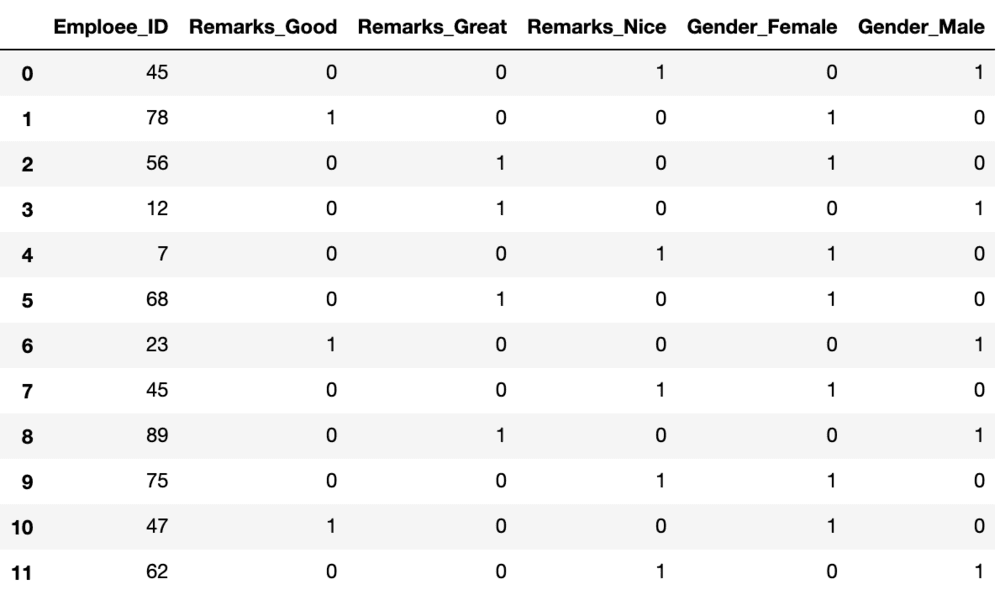
One Hot Encoding in Machine Learning
One-hot encoding is used to convert categorical variables into a format that can be readily used by machine learning algorithms. The basic idea of one-hot encoding is to create new variables that take on values 0 and 1 to represent the original categorical values.
Onehot encoding per category in Pandas 9to5Tutorial
This is where one-hot encoding comes to rescue. In this post, you will learn about One-hot Encoding concepts and code examples using Python programming language. One-hot encoding is also called as dummy encoding. In this post, OneHotEncoder class of sklearn.preprocessing will be used in the code examples. As a data scientist or machine learning.
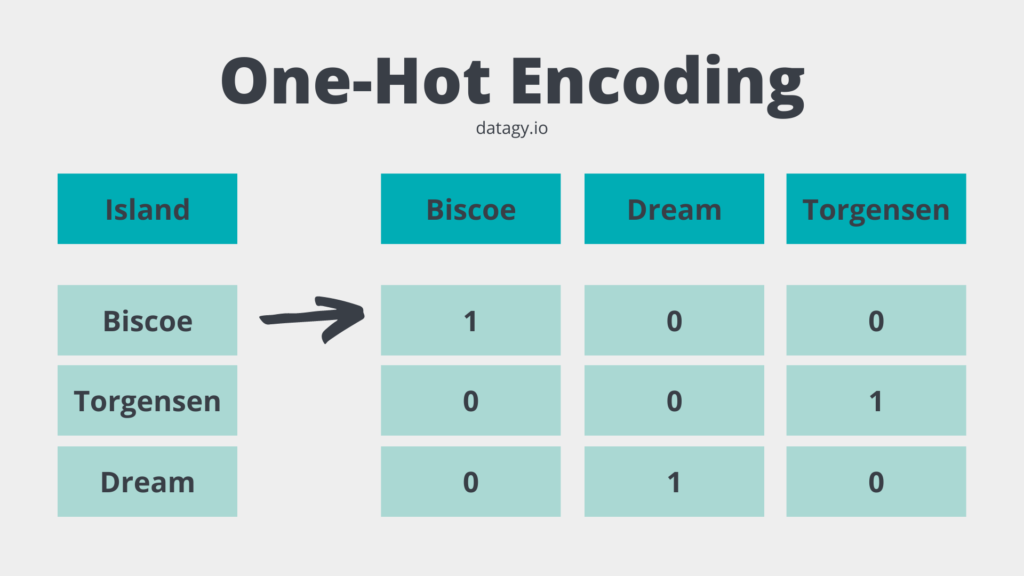
OneHot Encoding in ScikitLearn with OneHotEncoder • datagy
One Hot Encoding (OHE from now) is a technique to encode categorical data to numerical ones. It is mainly used in machine learning applications. Consider, for example, you are building a model to predict the weight of animals. One of your inputs is going to be the type of animal, ie. cat/dog/parrot.

Python How to give column names after onehot encoding with sklearn iTecNote
1. What is One-Hot Encoding? In the step of data processing in machine learning, we often need to prepare our data in specific ways before feeding into a machine learning model. One of the examples is to perform a One-Hot encoding on categorical data.
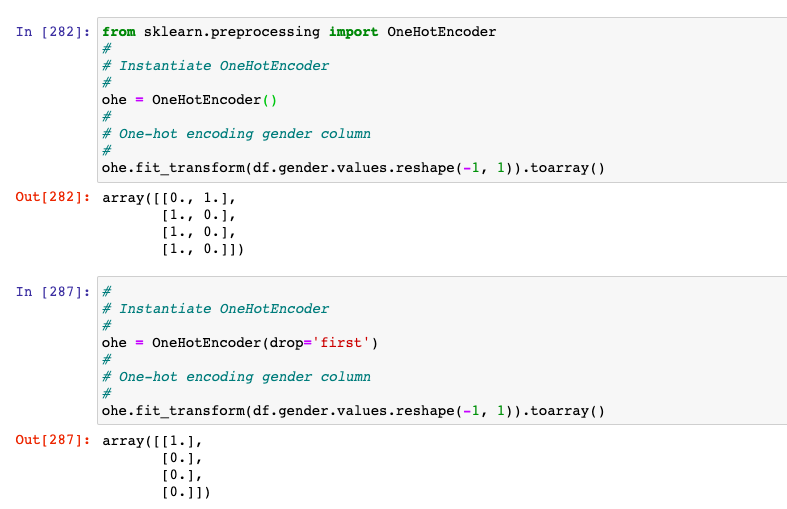
Onehot Encoding Concepts & Python Examples Analytics Yogi
One hot encoding is a technique that we use to represent categorical variables as numerical values in a machine learning model. The advantages of using one hot encoding include: It allows the use of categorical variables in models that require numerical input.

Comparing Label Encoding And OneHot Encoding With Python Implementation
The features are encoded using a one-hot (aka 'one-of-K' or 'dummy') encoding scheme. This creates a binary column for each category and returns a sparse matrix or dense array (depending on the sparse_output parameter) By default, the encoder derives the categories based on the unique values in each feature.
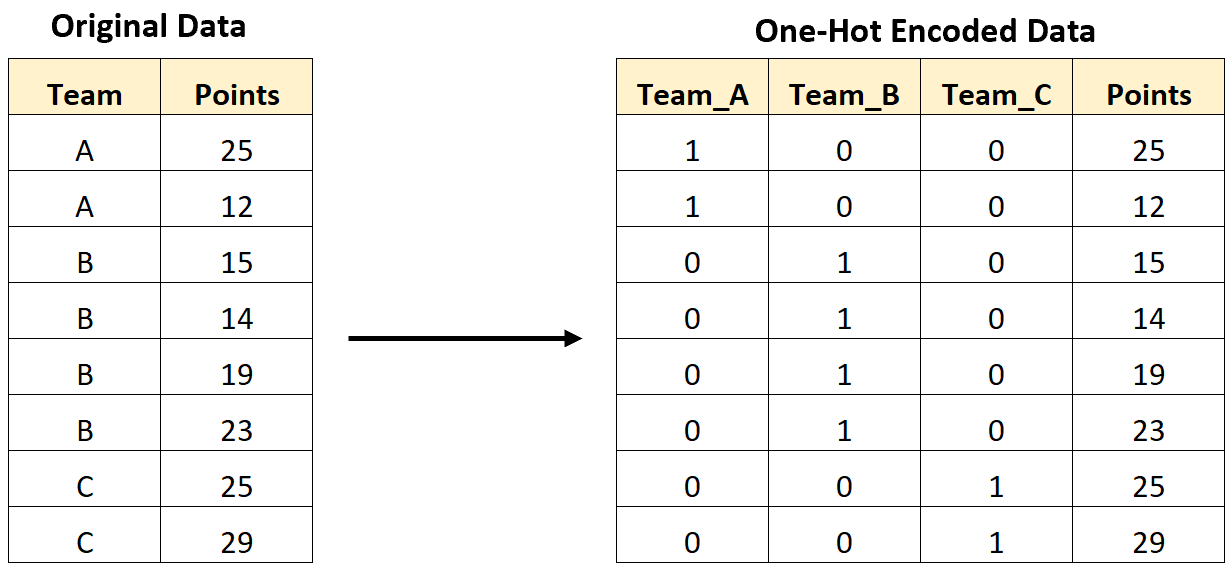
Как выполнить горячее кодирование в Python
One hot encoding represents the categorical data in the form of binary vectors. Now, a question may arise in your minds, that when it represents the categories in a binary vector format, then when does it get the data converted into 0's and 1's i.e. integers?

Pandas get_dummies (OneHot Encoding) Explained • datagy
February 16, 2021 The Pandas get dummies function, pd.get_dummies (), allows you to easily one-hot encode your categorical data. In this tutorial, you'll learn how to use the Pandas get_dummies function works and how to customize it. One-hot encoding is a common preprocessing step for categorical data in machine learning.
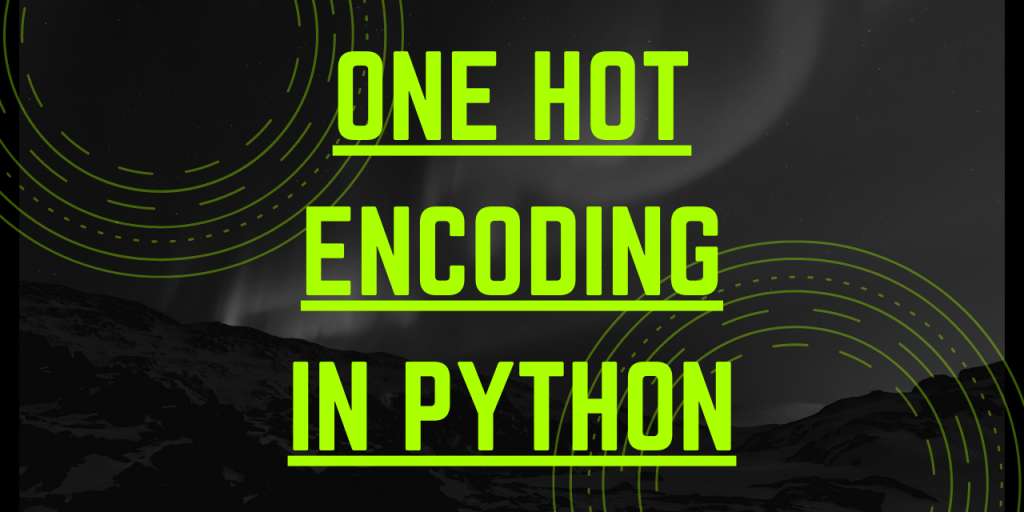
One hot encoding in Python A Practical Approach AskPython
1 Is it possible to one-hot encode a pandas dataframe by numerical values? It seems get_dummies () only works for string data. For example, I'm hoping to do this:

Quick explanation Onehot encoding YouTube
A one hot encoding is a representation of categorical variables as binary vectors. This first requires that the categorical values be mapped to integer values. Then, each integer value is represented as a binary vector that is all zero values except the index of the integer, which is marked with a 1. Worked Example of a One Hot Encoding

Onehot Encoding in Python YouTube
Python Example: One-Hot Encoding with pandas Now, let's explore a practical example using the popular Python library, pandas. Assume we have a dataset with a "Gender" column.

Pandas get dummies (OneHot Encoding) Explained • datagy
In particular, one hot encoding represents each category as a binary vector where only one element is "hot" (set to 1), while the others remain "cold" (or, set to 0). Personally, I find this is best explained with an example. Let's take a look at the image below: Understanding One Hot Encoding for Dealing with Categorical Data in Machine Learning
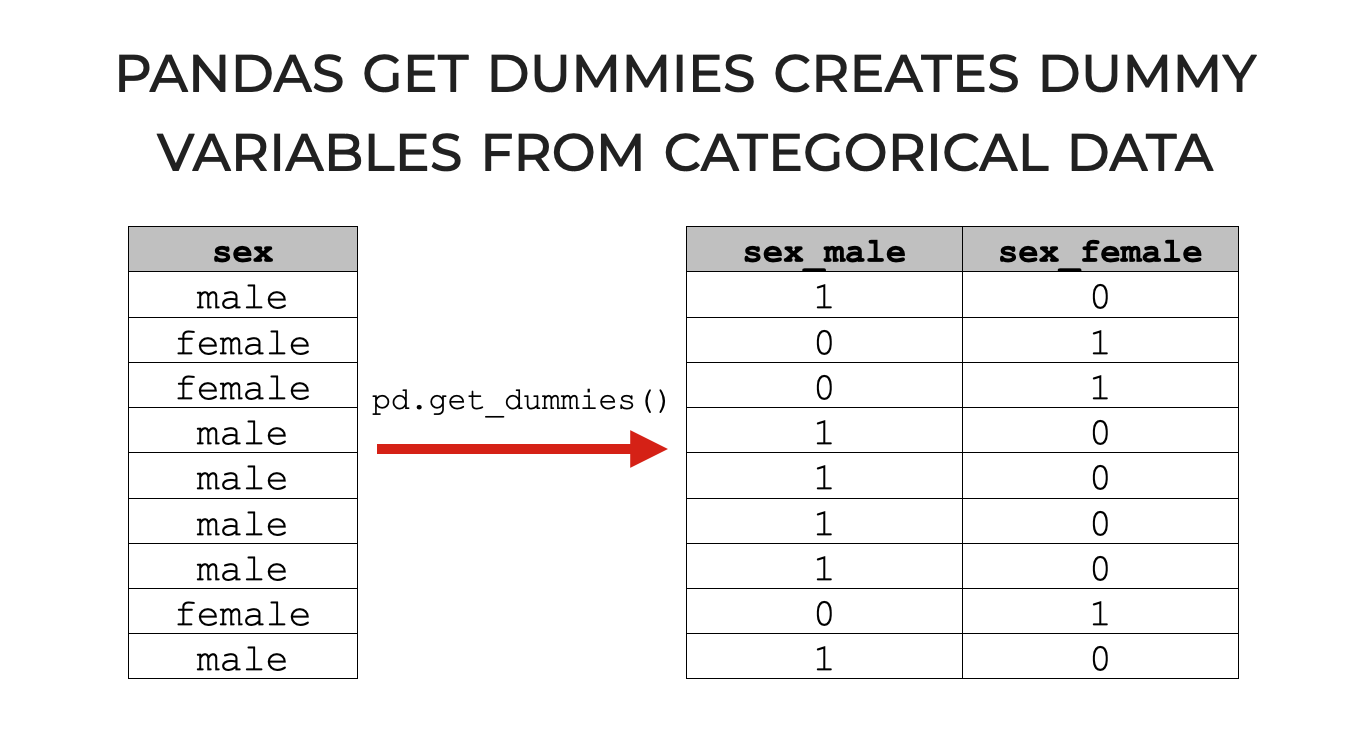
How to Use Pandas Get Dummies in Python Sharp Sight
302 Approach 1: You can use pandas' pd.get_dummies. Example 1: import pandas as pd s = pd.Series (list ('abca')) pd.get_dummies (s) Out []: a b c 0 1.0 0.0 0.0 1 0.0 1.0 0.0 2 0.0 0.0 1.0 3 1.0 0.0 0.0

One Hot Encoding Using Pandas and Dummy Variable Trap ??? ML Jupyter Notebook One Magic
One-hot encode column; One-hot encoding vs Dummy variables; Columns for categories that only appear in test set; Add dummy columns to dataframe; Nulls/NaNs as separate category; Updated for Pandas 1.0. Dummy encoding is not exactly the same as one-hot encoding. For more information, see Dummy Variable Trap in regression models